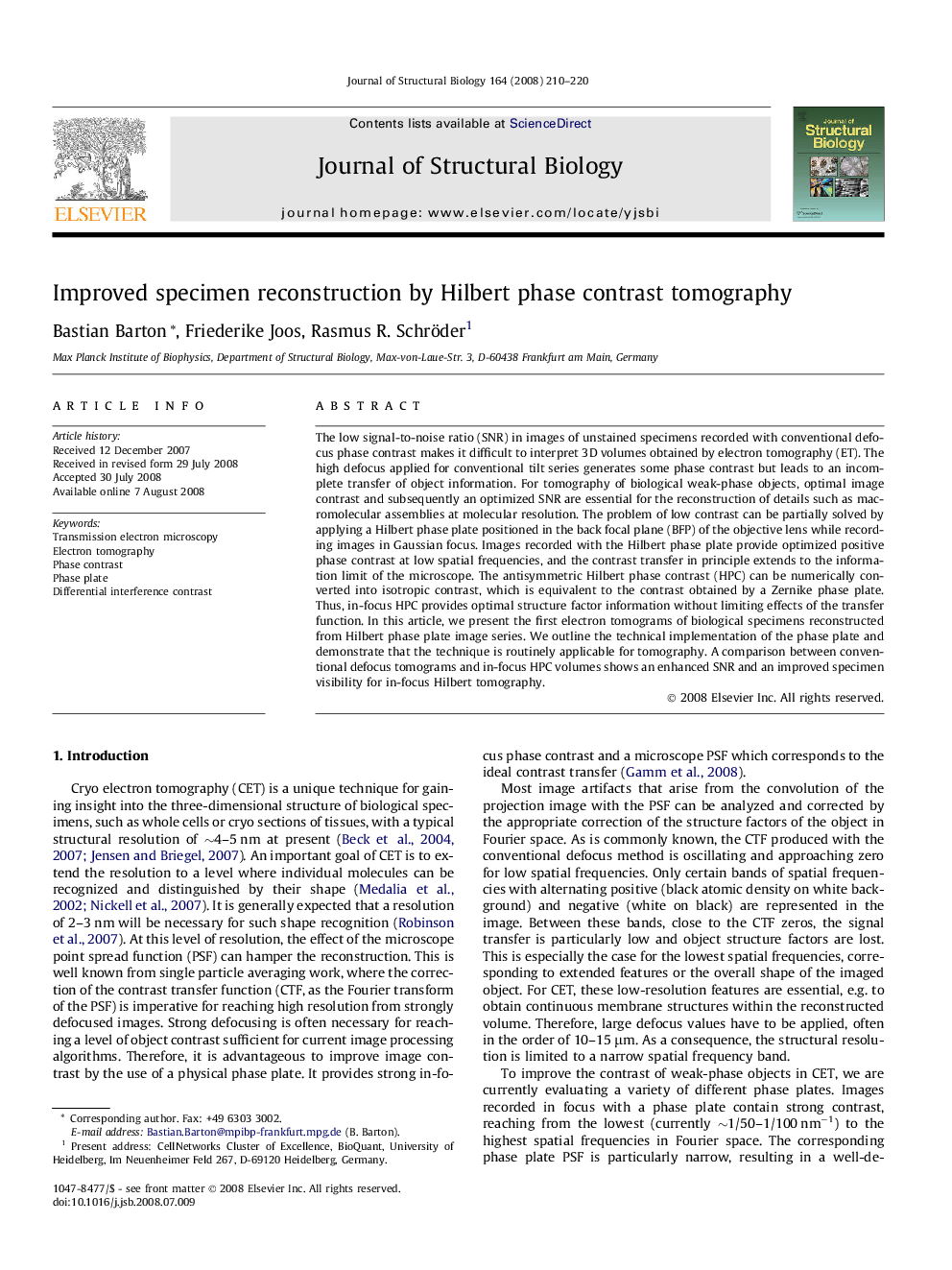| Article ID | Journal | Published Year | Pages | File Type |
|---|---|---|---|---|
| 2829189 | Journal of Structural Biology | 2008 | 11 Pages |
The low signal-to-noise ratio (SNR) in images of unstained specimens recorded with conventional defocus phase contrast makes it difficult to interpret 3D volumes obtained by electron tomography (ET). The high defocus applied for conventional tilt series generates some phase contrast but leads to an incomplete transfer of object information. For tomography of biological weak-phase objects, optimal image contrast and subsequently an optimized SNR are essential for the reconstruction of details such as macromolecular assemblies at molecular resolution. The problem of low contrast can be partially solved by applying a Hilbert phase plate positioned in the back focal plane (BFP) of the objective lens while recording images in Gaussian focus. Images recorded with the Hilbert phase plate provide optimized positive phase contrast at low spatial frequencies, and the contrast transfer in principle extends to the information limit of the microscope. The antisymmetric Hilbert phase contrast (HPC) can be numerically converted into isotropic contrast, which is equivalent to the contrast obtained by a Zernike phase plate. Thus, in-focus HPC provides optimal structure factor information without limiting effects of the transfer function. In this article, we present the first electron tomograms of biological specimens reconstructed from Hilbert phase plate image series. We outline the technical implementation of the phase plate and demonstrate that the technique is routinely applicable for tomography. A comparison between conventional defocus tomograms and in-focus HPC volumes shows an enhanced SNR and an improved specimen visibility for in-focus Hilbert tomography.
